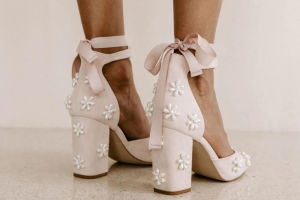The DIY t-shirt printing trend behind “Y2K” fashion

Explore the resurgence of Y2K fashion and the role of DIY t-shirt printing
Picture this: You’re out on the town. You spot a middle-aged man walking out of the grocery store wearing a tattered, graphic t-shirt layered over a long-sleeved shirt. He passes by a pair of teenage girls also wearing layered tops with big logos and baggy jeans. While this clothing style known today as “Y2K fashion” has captured the wardrobes of today’s youth, for some, namely GenX-ers and older Millennials, these trends never went away. When someone says “Y2K fashion” think layered graphic tees, baggy jeans, and maybe a bucket hat, to name a few staples of the trend. Among the array of throwback styles experiencing a resurgence, t-shirt printing stands out as a prominent feature, emblematic of the do-it-yourself ethos that defined the era.
While t-shirt printing has been an established art practice since the early 20th century, the commercial rise of at-home label and iron-on transfer printing in the late 1990s and early 2000s made do-it-yourself (DIY) t-shirt printing more accessible to the broader public in the United States. For those wanting to dabble in screen printing, a traditional method dating back centuries, it requires more specialized tools, practice, and expertise over time. In this article, we explore different DIY t-shirt printing techniques that define today’s Y2K and yesteryear’s Y2k fashion trends. We’ll look at the pros and cons, whether you are just curious how it’s done or are embarking on a new obsessive hobby.
Screen Printing: Quality, Tradition, Technique
Screen printing is a time-honored technique loved for its classic appeal and durability. Whether you're crafting a statement tee or adding a personal touch to your basics, screen printing delivers unparalleled quality.
The pros include durability, vibrant colors, and cost-effectiveness with bulk printing. Screen printing offers long-lasting designs that can withstand numerous washes, making it ideal for everyday wear. The method allows for vibrant and opaque colors, perfect for bold designs and graphics. While the setup costs may be higher, screen printing becomes more economical for large batch orders.
There’s also a time-intensive process to screen printing that includes preparation of the silkscreen and washing and curing the t-shirt after the printing process. The printing process itself also requires a different screen for each layer of color added to the design. Depending on your goals and intention as a new hobbyist, or if you simply want a custom t-shirt design for a specific event or purpose, this time-intensive process may or may not be a good fit for you.
The cons may include a more complex setup and limited detail to design. Beginners may find the initial setup process daunting, as it requires specialized equipment and expertise. Detailed designs with intricate shading may not translate as well with screen printing compared to other techniques.
Digital Printing: Precision at Your Fingertips
From intricate patterns to vivid photographs, digital printing, also known as heat transfer printing, offers endless creative possibilities. The pros are high-quality detail, little setup required, and a quick turnaround time. Digital printing excels in reproducing intricate designs with fine details and gradients. Access to high-quality digital prints, at-home printers, and print transfer products has improved greatly since this product first made a big splash in early 2000s craft and hobbyist retail. Today you can get t-shirt transfer paper for whites and darks and have access to a variety of software and free design tools on the internet to craft your digital design. With heat-transfer printing, you can experiment with a wide range of designs, from intricate graphics to personalized photographs.
You'll still need an inkjet or laser printer to print your design onto the transfer paper, and an iron or some sort of heat press mechanism to bond the design from the transfer paper to the fabric. Perfect for on-demand printing, digital printing offers fast turnaround times for specific events, like matching t-shirts for a bachelorette party or a small family gathering.
The cons are that this method is less durable and that you are limited in the kind of t-shirt fabric you can use. Digital printing works best on 100% cotton or cotton-blend fabrics, limiting options for other sustainably sourced materials. Designs may also fade or crack over time, especially with frequent washing or exposure to heat.
A Note on T-Shirt Fabric Choice:
High-quality fabrics often have a tighter weave, which allows for better ink absorption and retention. This results in more vibrant and durable prints. Sustainable fabrics, such as organic cotton and TENCEL, are typically made with higher-quality materials and construction techniques, making them more durable. This means that the fabric is less likely to stretch, distort, or shrink during the printing process, resulting in more accurate and consistent prints.
Getting Started as a New Hobbyist
If you're new to t-shirt printing, fear not! Getting started is easier than you think. Begin by researching each printing technique to determine which aligns best with your design goals and skill level. Consider investing in a starter kit that includes all the necessary equipment and materials for your chosen method. To start, practice with simple, plain cotton t-shirts. Then, depending on your printing technique, play around with different high-quality, versatile t-shirt fits, colors, sizes, sleeve lengths, and sustainability-sourced fabrics. You can find more resources and information on my Simpletees blog about determining the best t-shirt choices for you. Don't be afraid to experiment and unleash your creativity – after all, that's what hobbyists do best!
In conclusion, t-shirt printing isn't just about creating stylish garments – it's about making a statement. Whether you prefer the timeless charm of screen printing or the precision and convenience of digital printing and heat transfer designs, there's a technique that's perfect for you. So go ahead, unleash your creativity, have fun, and make a statement –in the spirit of Y2K fashion.
Author: Megan Flowers




